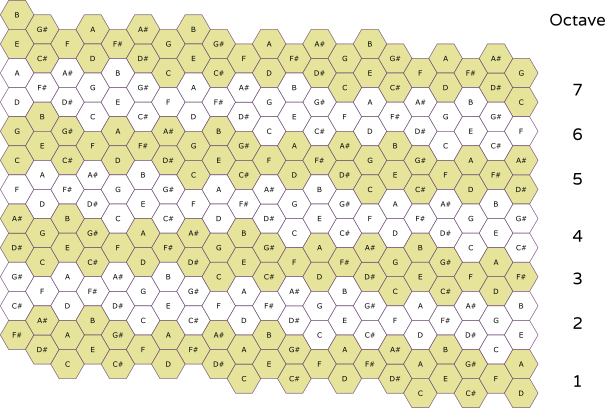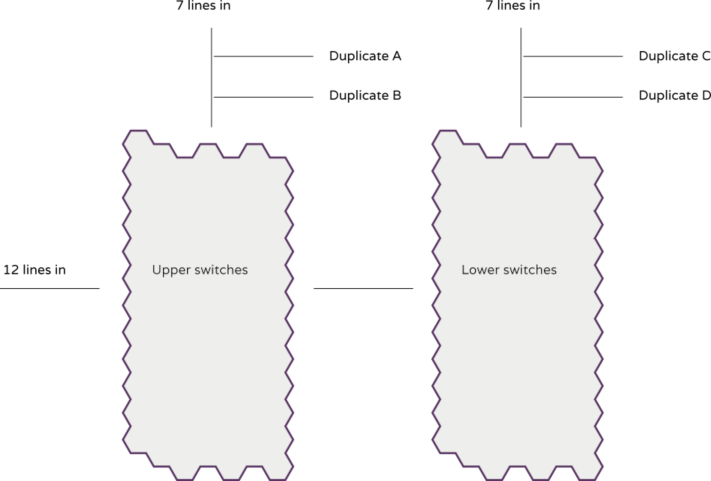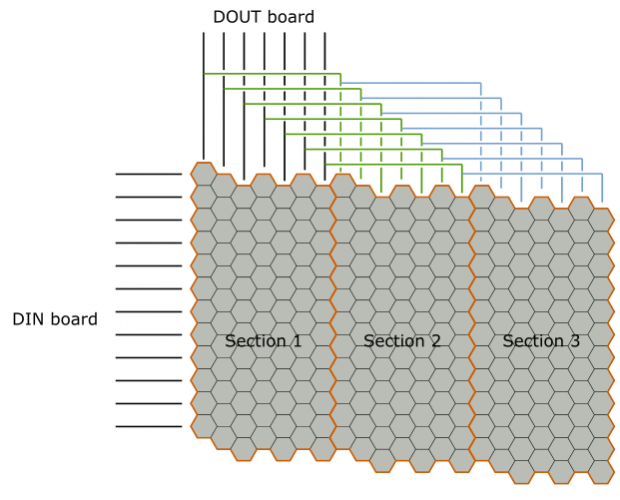
Redgeneral
-
Posts
3 -
Joined
-
Last visited
Content Type
Profiles
Forums
Blogs
Gallery
Posts posted by Redgeneral
-
-
I've been working my way through the search results of this forum, its how I reached the approach by @TAG
Each section contains the same notes (octaves 1-7) and a duplicate of the matrix. When a note is hit, e.g. C4, it shouldn't matter which section it is from.As well as only a smaller matrix to scan, there is the possibility of adjustable length to the keyboard by addition or removing sections. This doesn't affect the range of notes.
The Midi channel could be assigned based on rows, but not by section due to the repeated lines.
-
I am working on a harmonic table midi keyboard inspired by http://wiki.lvl1.org/Isomorphic_Keyboard
This will be a grid of 21x12 keys with two switches per key. Two sets of matrix switches, one upper PCB and one Lower PCB to.determine velocity.

I was concerned about scanning two large matrices, but the keys repeat along its length,
By duplicating the lines in, the 21x12 matrix can be reduced to 7x12. This should hopefully reduce the total matrix scanning time with only sacrificing the option to designate keyboard sections to different channels.

Are there any problems to this approach?
Regarding resistors, do I need any on the lines in/out and if so should they be before the line split or after?
Thank you for the help.



Harmonic Table Matrix
in Design Concepts
Posted · Edited by Redgeneral
Thank you for the feedback on the matrix design. The matrix was really flawed.
I will build the matrix as you suggested @Antichambre
(Diagram not to scale)